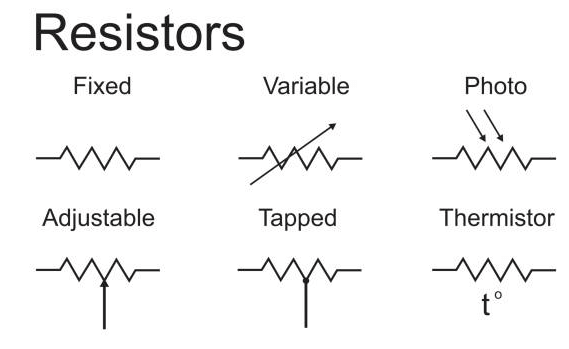The resistor symbol is one of the most fundamental and recognizable icons in electrical engineering and circuit design. Representing a critical electronic component—the resistor—it plays an essential role in diagrams, schematics, and blueprints across multiple industries. While small in appearance, the resistor symbol carries a significant legacy that spans history, culture, and technological innovation.
The Origins and History of the Resistor Symbol
The Birth of Circuit Diagrams
The resistor symbol has its roots in the early 20th century, during the rise of electrical engineering as a formal discipline. As inventors and engineers began to standardize their designs, they needed consistent visual representations for components. This gave birth to schematic diagrams, which used symbols to represent elements like batteries, wires, and resistors.
Originally, the resistor symbol varied by country. In the United States, a zigzag line was adopted, symbolizing resistance through a path with obstruction. In contrast, European countries preferred a rectangular box. Over time, both forms of the resistor symbol gained recognition, with regional preferences remaining to this day.
Standardization by IEEE and IEC
The Institute of Electrical and Electronics Engineers (IEEE) and the International Electrotechnical Commission (IEC) later standardized these symbols to ensure global coherence. Today, the resistor symbol is typically represented in two forms:
- Zigzag line (used in American schematics)
- Rectangle (used in international and European schematics)
Both are universally understood and appear in textbooks, manuals, and software used by engineers worldwide.
The Significance of the Resistor Symbol in Modern Electronics
Why the Resistor Symbol Matters
The resistor symbol is more than a simple icon—it’s a blueprint shorthand that communicates vital information about a circuit’s function. Resistors limit current, divide voltages, and dissipate energy. By including a resistor symbol in a schematic, designers convey where these actions occur.
In digital electronics, the resistor symbol can represent pull-up or pull-down resistors, influencing logic levels and signal flow. In analog circuits, it appears in voltage dividers, filters, and amplifiers. Whether in a smartphone or a satellite, the resistor symbol is a quiet yet powerful indicator of functionality.
Cross-Industry Relevance
From automotive engineering to aerospace and consumer electronics, the resistor symbol serves as a universal design language. It allows global teams to collaborate, review, and troubleshoot circuits efficiently. For students, recognizing the resistor symbol is often one of the first steps in learning electrical design.
Common Myths and Misconceptions About the Resistor Symbol
Despite its ubiquity, there are several myths surrounding the resistor symbol:
Myth #1: The Zigzag Represents Real Resistor Shape
Many people believe the zigzag resistor symbol resembles the physical appearance of a resistor. In reality, resistors come in various shapes—cylindrical, rectangular, surface-mounted—and rarely mirror the symbol’s zigzag. The shape was chosen more for visibility and differentiation on paper.
Myth #2: One Symbol Fits All
Some assume there is only one correct resistor symbol. In truth, both the zigzag and rectangle forms are accepted. The key is consistency within a schematic and clarity for its intended audience.
Myth #3: Resistor Symbol Placement Doesn’t Matter
Incorrect placement or orientation of the resistor symbol can lead to misinterpretation. While resistors are not polarized, their context in the circuit—especially with labels like R1, R2, etc.—matters greatly for reading and understanding.
Notable Figures and Events Related to the Resistor Symbol
Ohm’s Law and Georg Simon Ohm
The development of the resistor symbol is closely tied to the work of Georg Simon Ohm, a German physicist who discovered the relationship between voltage, current, and resistance—now known as Ohm’s Law. Though he lived in the 1800s, long before the standard resistor symbol was created, his work laid the foundation for its necessity in electrical schematics.
Contributions from Electrical Engineering Pioneers
Engineers like Charles Proteus Steinmetz and Thomas Edison helped popularize circuit design. Their efforts in developing electrical systems in the early 1900s required symbolic representations, contributing to the early adoption and evolution of the resistor symbol.
Cultural and Industrial Impact of the Resistor Symbol
In Education and Media
The resistor symbol has become an iconic part of STEM education. It appears in textbooks, educational kits, and online tutorials. It’s even used in pop culture and graphic design—appearing on T-shirts, art, and electronics-themed merchandise as a nod to the tech-savvy.
In Engineering Software and Tools
Modern CAD tools like Eagle, KiCad, and Altium Designer use libraries of components that prominently feature the resistor symbol. This ensures continuity and accessibility for engineers designing both simple circuits and complex PCBs.
Future Trends and Developments Involving the Resistor Symbol
Symbolic Evolution with Technology
As technology progresses, the visual representation of circuit components may evolve. However, the resistor symbol is likely to remain consistent due to its established utility and recognition. That said, enhancements in interactive schematics, 3D modeling, and augmented reality might change how the resistor symbol is viewed or interacted with in real-time simulations.
The Role in Emerging Tech
With the rise of Internet of Things (IoT), wearable electronics, and AI hardware, resistors—and by extension, the resistor symbol—will continue to be integral. Even as circuits become smaller and more complex, the resistor symbol remains a reliable constant in the language of innovation.
Conclusion: More Than Just a Symbol
The resistor symbol represents more than resistance—it symbolizes the legacy, clarity, and structure of modern electronics. From its historical roots to its impact on culture and technology, the resistor symbol remains a silent but essential part of our digital world. As we look toward the future, one thing is certain: wherever there’s electricity, the resistor symbol will continue to guide and inspire.
You may also read:
Understanding the Potentiometer: History, Significance, and Future Trends




